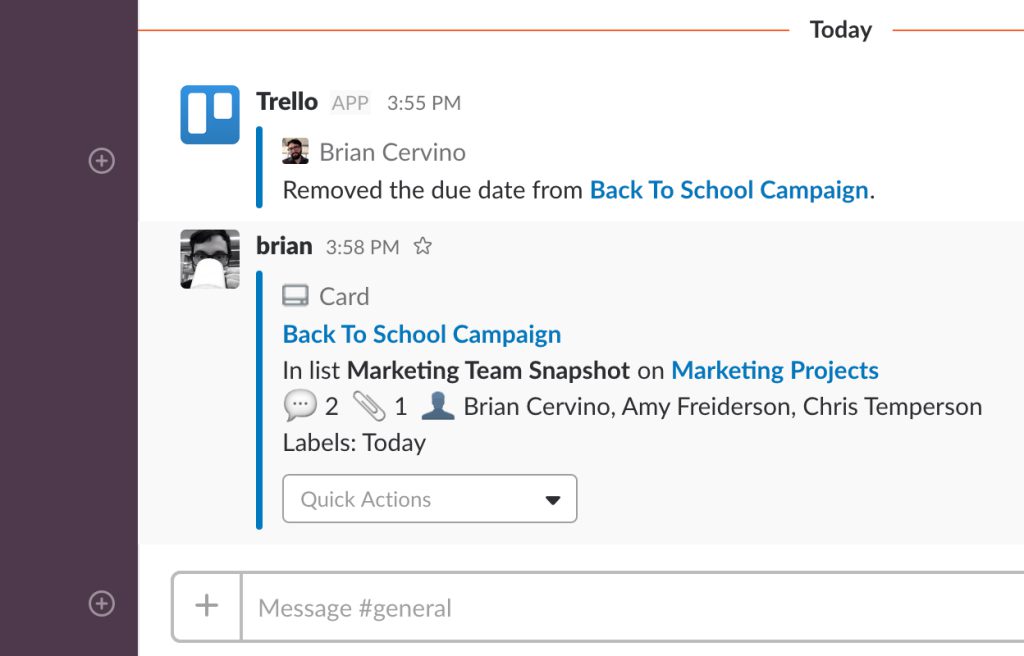In a matter of minutes and without a single line of code, Zapier allows you to automatically send info between Asana and Slack. Get started with workflows like: Create Asana tasks from new saved Slack messages. Or check out the rest of our guided workflows. Save time with Zapier; it's free to try. Leaders in the collaboration market have emerged. The collaboration market is saturated, with more. The main differences between Slack and Asana are: Slack is a communication app, whereas Asana is a project management platform. Slack lets teams collaborate with the entire organization in smaller groups, whereas Asana uses communication on projects. Slack has to be used by a group of team members, whereas Asana can be used by an individual.
Don't let action items or next steps get lost in your chats. Turn your Slack conversations into actionable tasks in Asana. The Asana for Slack integration ensures your team can work seamlessly between Asana and Slack, without having to constantly switch tools.
With the Asana for Slack integration, you'll be able to:
- Add a message to an existing task
- Create new tasks without leaving Slack
- Take action on tasks right from notifications or an Asana link
- Link an Asana project to a Slack channel
- Automate processes by combining Rules and Slack
As an introduction, I’d like to start by saying that I equally love Slack and Asana. I believe they are game-changers compared to previous solutions (like email). I also believe things can go really wrong if they aren’t used properly. My personal position, which is quite controversial: do not connect Slack and Asana in any way!
Here a couple of scenarios to illustrate my point.

« I want to be able to create tasks very quickly from Slack »
That’s because you spend your day in Slack and have the app opened all day when you should spend your day in Asana and also have that app opened! And when you start allowing people to create tasks from Slack, you end up with half-baked tasks made only of a title, no description, no attachment, no comments. People will start to throw tasks at each other rather than collaborating.
« My boss doesn’t want to go to Asana, he wants to get notified in Slack »
What your boss is basically saying is that it’s ok not to use Asana. They are giving the wrong example and I would not be surprised you have adoption problems because the leader does not show the right example! Slack is a glorified chat, not a work management tool.
« I want project updates to be posted to the project Slack channel »
Great, now you get the same notifications in Slack and in Asana. And god forbid if you kept the Asana emails notifications on, you get them in Inbox and email. Stop the madness. Remove all notifications published to Slack, and teach people how to use Inbox! Otherwise, they’ll be reading only one source of notifications, the ones from the shiny Slack, and you’ll quickly find yourself with people not answering questions or doing work that is only published in Asana.

« People keep talking about tasks in Slack and they don’t use Asana. »
What. A. Surprise. You did everything you could so that people could do their work from Slack and now you complain they don’t go to Asana? You are slowly destroying the benefits of Asana: just like with emails, people are slowly going back to discussions mixing several topics, assigning tasks just by telling someone to do something, information gets lost, and clarity is thrown out of the window.
So, what should you do?
Make the rules clear: Asana is for work around specific tasks. Slack is for both informal chat and higher-level discussions. Notifications about tasks are to be read from Asana, specifically from the Inbox.
Asana Email Integration
Put together a fun but strict Slack police force: they will be responsible for enforcing, in a nice and fun way, the rules above. When people say « could you do this? » in Slack, they will remind them to rephrase « could you do this? If yes, I’ll assign you a task right away ». When someone asks « what’s the status of project ABC or task XYZ » they will gently remind them that they need to do that extra effort to check it out themselves in Asana rather than expecting others to summarize for them.
Asana Discord
Remind everyone that we don’t throw half-baked tasks at each other. A name is not a task. A task is made of a name, a description, a due date, and often a nice comment along with it.
Asana Free Download
Conclusion: moving away from Slack is haaaaaaaaard. So hard. But it is worth it. Why do we like Slack so much? For me, 2 reasons: it is shiny (with colors and emojis) and it is instantaneous. Bring the shiny in Asana by using emojis and colors (properly). And stop believing everything needs to happen instantly: adopt a slower pace with Asana…
